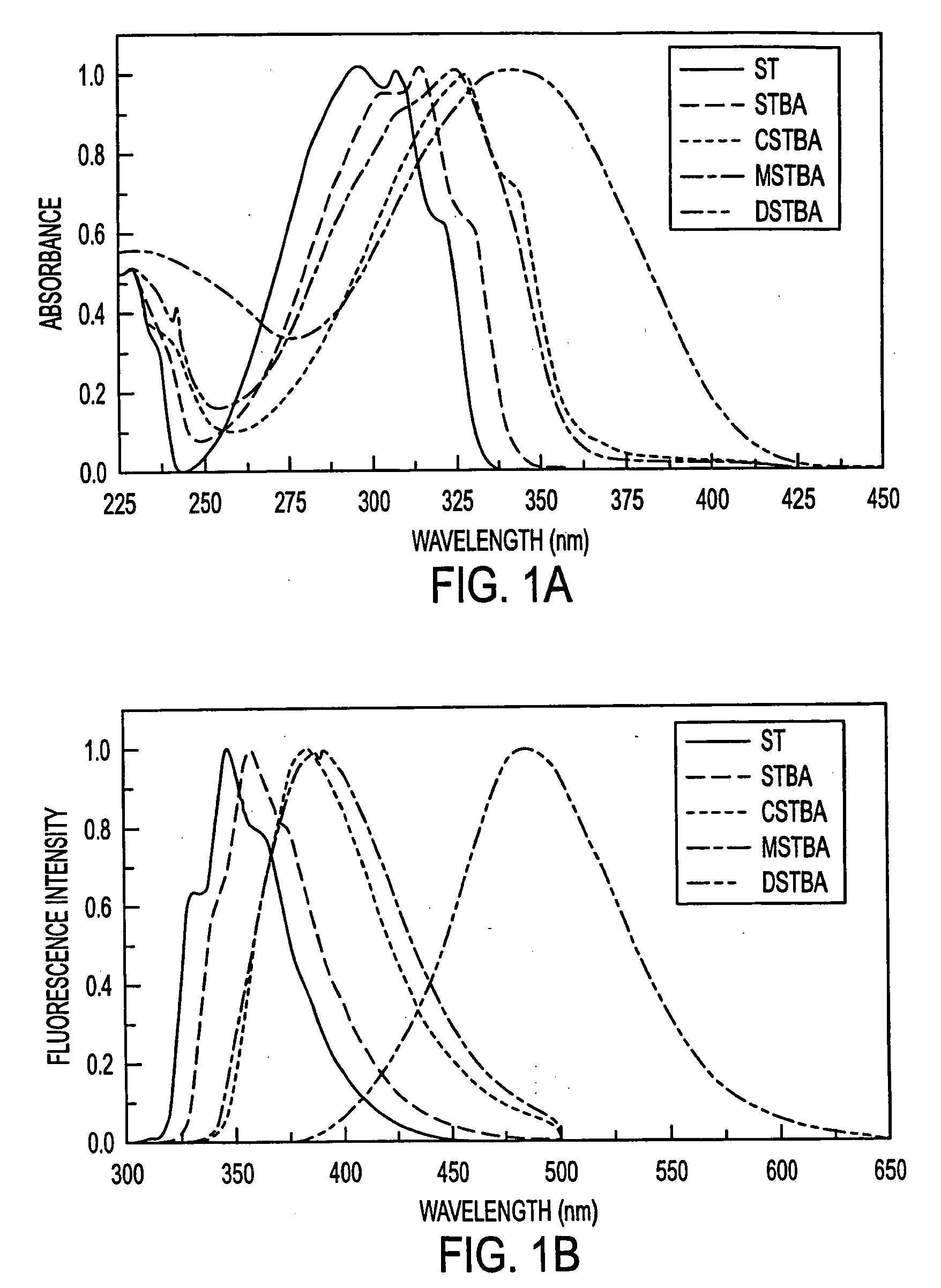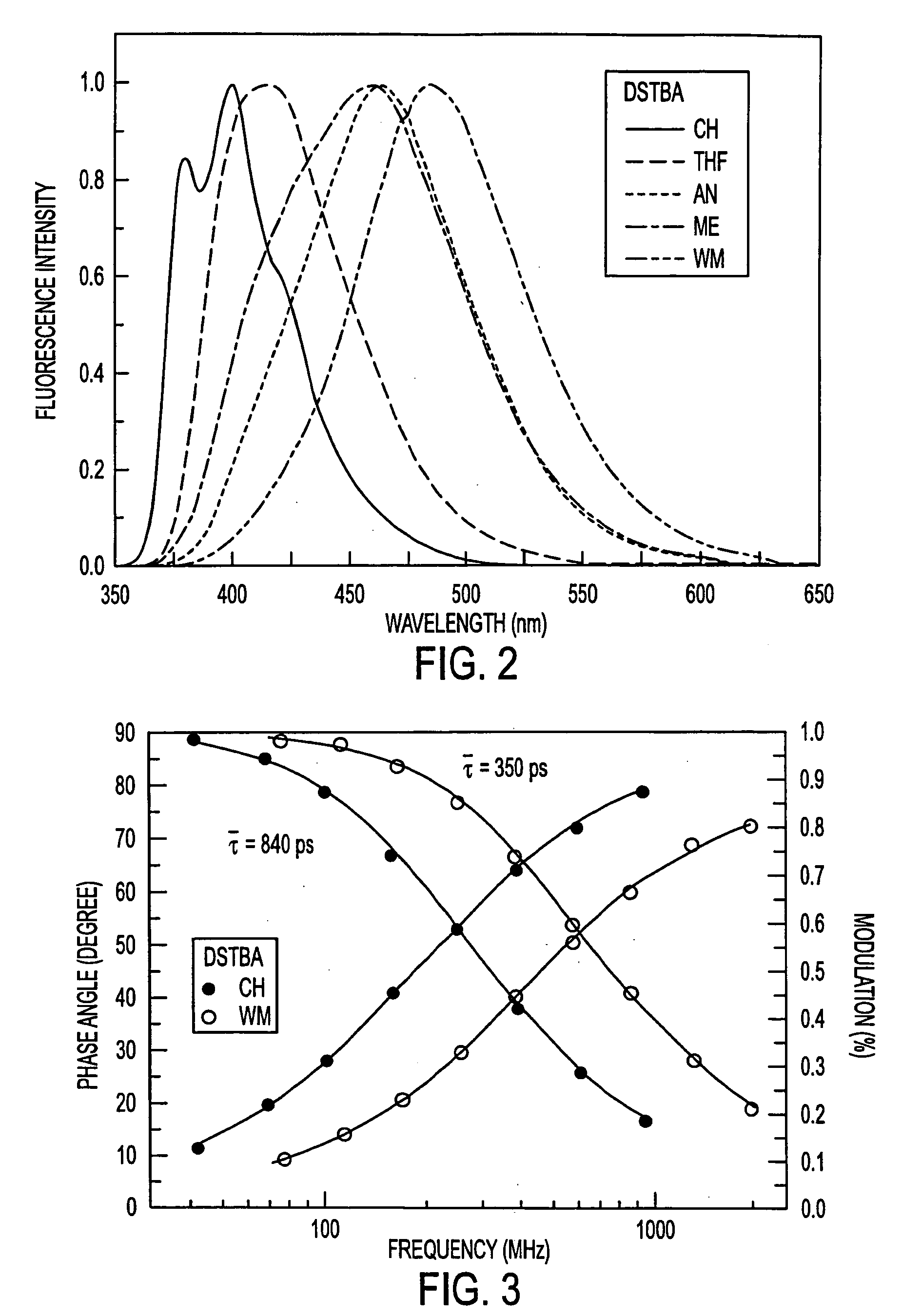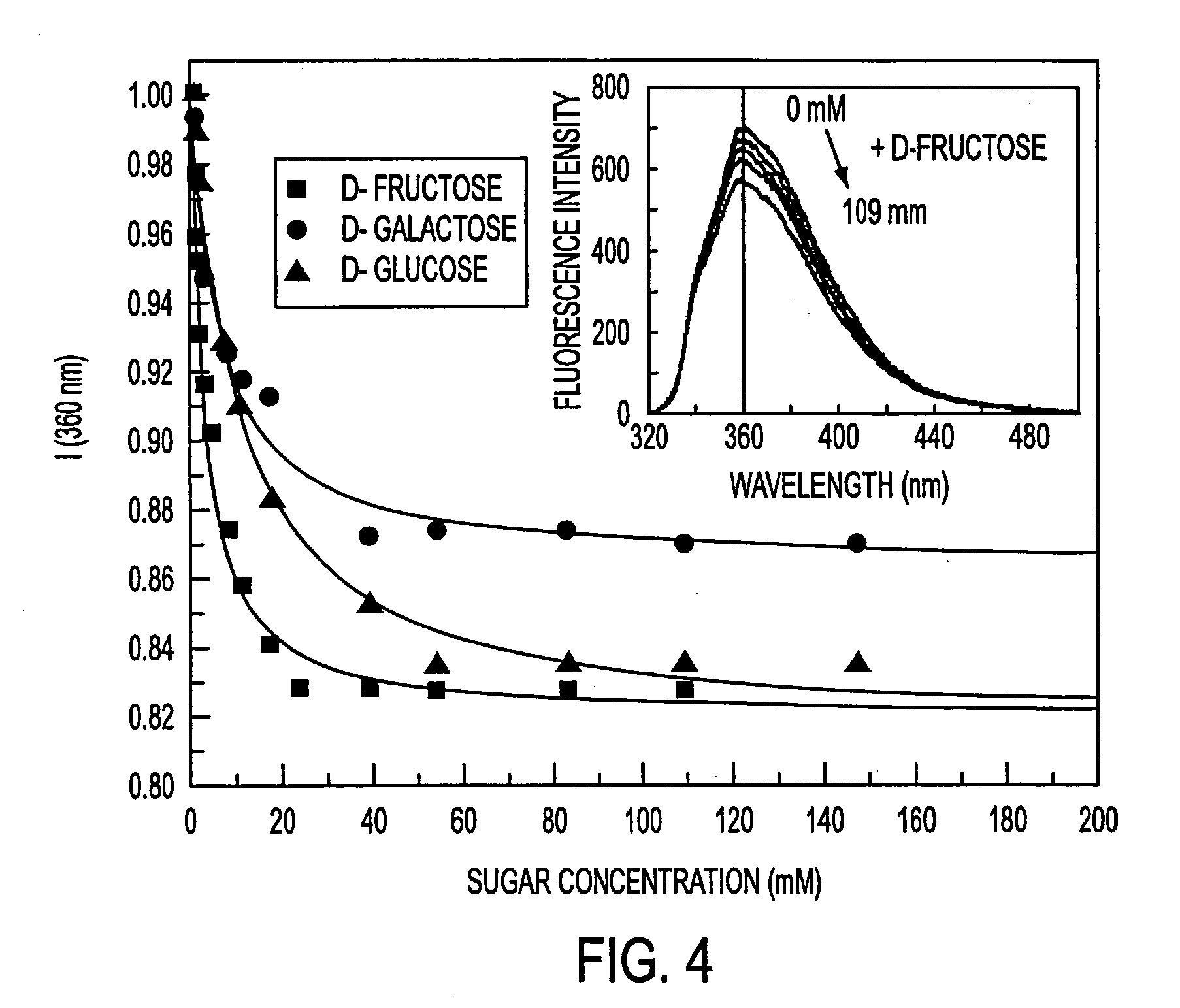Fluorescent probes for saccharrides
a fluorescence probe and saccharide technology, applied in the field of fluorescence probes, can solve the problems of low stability, limited methods, and limitations in the development of continuous implantable sensors, and achieve the effects of reducing sensitivity, increasing intensity, and reducing fluorescence emission
- Summary
- Abstract
- Description
- Claims
- Application Information
AI Technical Summary
Benefits of technology
Problems solved by technology
Method used
Image
Examples
example 1
[0083] Stilbene derivatives combining the boronic acid group in position 4 and donor or acceptor groups in position 4′ were synthesized. The molecular structures of the stilbene and substituted stilbenes investigated were as follows:
[0084] Dimethylamino and cyano groups are well known and used as donor and acceptor groups, respectively. Both groups have been widely used in the investigation of excited charge transfer in stilbene derivatives (44-46). The insertion of the methoxy group, which is a weaker donor group was also investigated. Stilbeneboronic acid (STBA) was used for a control molecule. A nitro group derivative has also been synthesized, but no fluorescence was observed in methanol and water for this compound. The results show that the insertion of a donor group and the boronic acid group directly on the stilbene in position 4 and 4′, respectively, lead to an excited charge transfer state. At higher pH, a new blue shifted emission band appears due to the loss of the acce...
example 2
[0101] The probes of this Example are based on donor / acceptor diphenylbutadiene and diphenylhexatriene derivatives involving the boronic acid group that display useful shifts and intensity changes in their emission spectra. These changes are induced by the changes of the electron-withdrawing property between the boronic acid group and its anionic form. Compared to the analogous stilbene probes, which also displays the charge transfer mechanism, the charge transfer mechanism can be applied for longer wavelength probes. This mechanism could be extended to the development of red and / or near infrared probes using appropriate fluorophores. In addition, the charge transfer mechanism induces a change in the fluorophore lifetime of the probes, thus opening the door to the development of new probes for fluorescence lifetime based sensing for sugars.
[0102] This example demonstrates the effect of the wavelength of absorption and emission of the fluorophore on the efficiency on the CT mechanis...
example 3
[0115] In attempt to develop additional fluorescent probes for glucose detection, the following
compound 6 was synthesized as shown in the following reaction scheme:
Compound 6 is readily synthesized from the reaction between the 2-amino-4′-dimethylaminoacetophenone hyrochloride (Synthesized from 4′-Dimethylaminoacetophenone (TCI america) according to the standard procedure described in the literature (57-58) and the 4-(4,4,5,5-tetramethyl-1,3,2-dioxaborolan-2-yl)benzoic acyl chloride, obtained from the commercially available 4-(4,4,5,5-tetramethyl-1,3,2-dioxaborolan-2-yl)benzoic acid refluxed in SOCl2, following by the dehydratation of the product in POCl3 (59). Donor / acceptor derivatives of diphenyloxazole are well known to show high fluorescence quantum yields, long wavelength emission and to be very sensitive to small variations affecting the ICT property of the excited state. In this case, the ICT state is between the boronic acid, the electron-withdrawing group, and the N,N...
PUM
| Property | Measurement | Unit |
|---|---|---|
| pKa | aaaaa | aaaaa |
| pH | aaaaa | aaaaa |
| pH | aaaaa | aaaaa |
Abstract
Description
Claims
Application Information
 Login to View More
Login to View More - R&D
- Intellectual Property
- Life Sciences
- Materials
- Tech Scout
- Unparalleled Data Quality
- Higher Quality Content
- 60% Fewer Hallucinations
Browse by: Latest US Patents, China's latest patents, Technical Efficacy Thesaurus, Application Domain, Technology Topic, Popular Technical Reports.
© 2025 PatSnap. All rights reserved.Legal|Privacy policy|Modern Slavery Act Transparency Statement|Sitemap|About US| Contact US: help@patsnap.com



